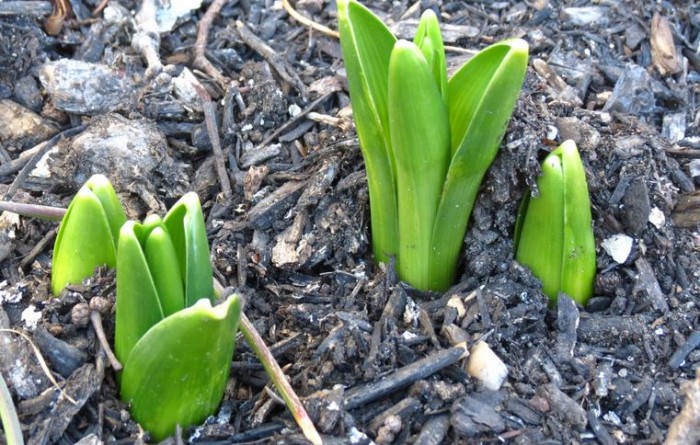The PermaDesign Weblog, with Nate Downey and Melissa McDonald!
Archives from September 2015
Fall Bulb Fertilizer Fix
Fall or Spring is an excellent time to ready your tulips and daffodils for the new year. The following recipe provides calcium and phosphorus bulbs desire for a healthy emergence.
Ingredients:
2-3 Pounds Bone Meal
2-3 Pounds Blood Meal
2-3 Pounds Greensand(is the soil is near neutral) or Wood Ash if the soil is acidic
Make sure that you wear a dust mask or respirator, gloves, and safety goggles and carefully mix the ingredients in a suitable container. Top-dress established beds with the mixture without working it into the soil. Allow moisture over the coming month to wash the fertilizer into the soil.
09/30/2015 | (0) Comments
Roof-Reliant Landscaping™ Step 10: Going Underground

An underground cistern system is much more than a buried water tank. In order to function properly, a rainwater harvesting system with an underground cistern must efficiently collect water from a roof, filter dirt and debris from the water, and convey clean water to the cistern for storage. The stored water will then be available for landscape use when needed.
09/27/2015 | (0) Comments
Roof-Reliant Landscaping™ Step 9: From Rainbarrel to Cisterns
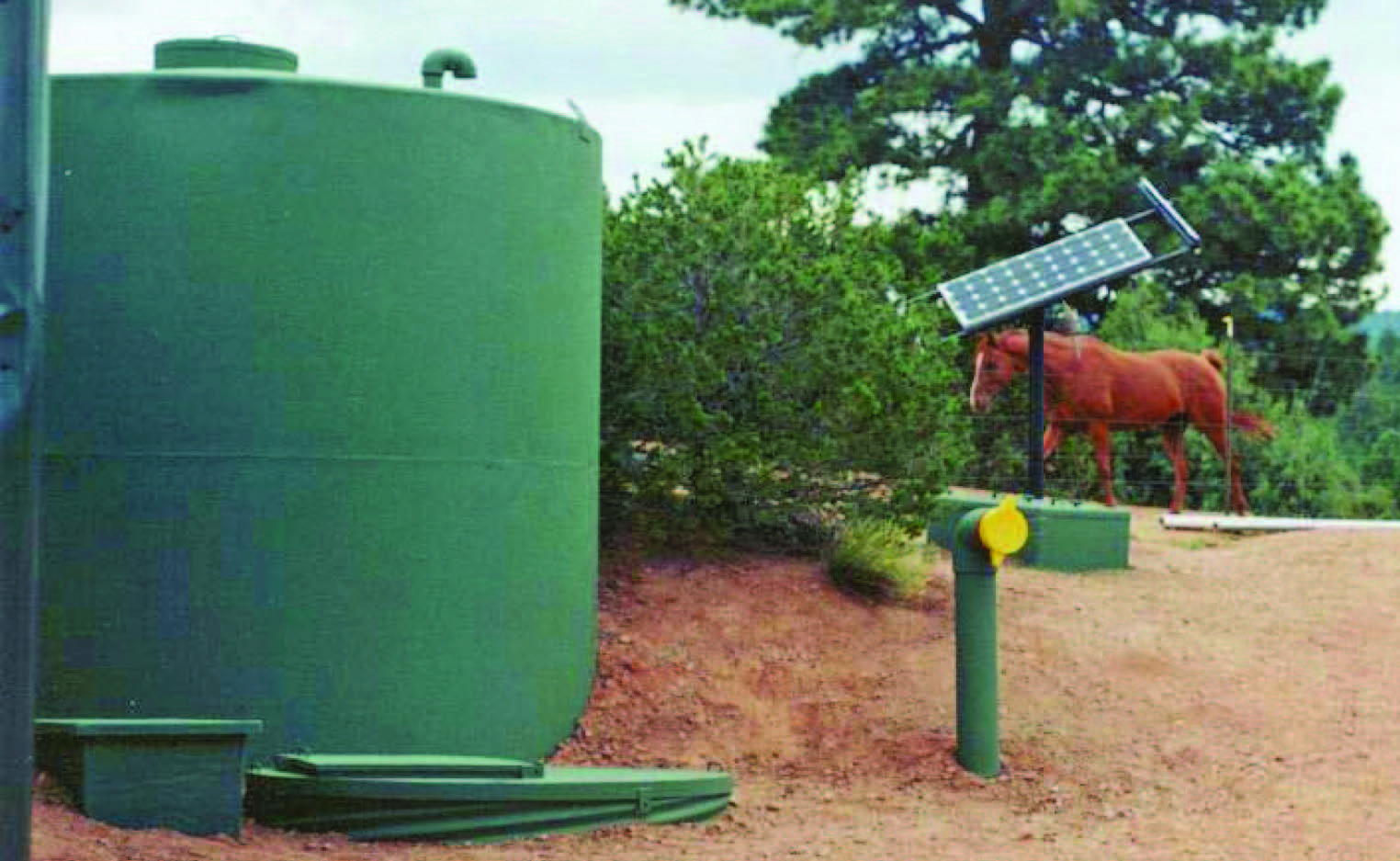
As the storage capacity of rainwater harvesting systems grows, their complexity and cost also grow. In modest systems, storage tanks can consist of rainbarrels that can be purchased at retail stores and landscape supply outlets. When simple rainbarrels do not provide adequate water storage, rainbarrels can be connected together with pipes to provide more storage capacity. In more ambitious systems, larger tanks designed for water storage can be purchased and delivered onsite. Sometimes storage tanks are built onsite to precise specifications.
09/25/2015 | (0) Comments
Straw Bale Composting
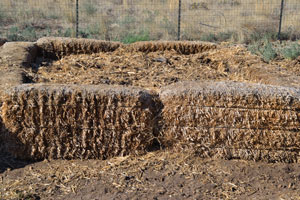
Straw Bales make for a great composting enclosure. They provide a breathable yet moisture retaining environment that itself becomes compost in time.
Ingredients:
8-12 straw bales
Loose Straw
Assorted green plant waste
Begin by arranging the bales 2 high in a “U” shape leaving on side open. As you begin to add waste to your compost alternate 2 to 3 inch layers of loose straw for every 1 to 6 inches of green waste. Make thinner layers for green waste that might tend to mat together and wider layers for loose waste that has more space between it such as tomato plants. Sprinkle a layer of soil on top of each green layer. The bales should hold together for a couple of years as the compost forms. When the compost is harvested, recycle the straw as mulch or more compost. Use new straw bales for a new bin when the old one has been used up.
09/24/2015 | (0) Comments
Roof-Reliant Landscaping™ Step 8: Cisterns are Systems
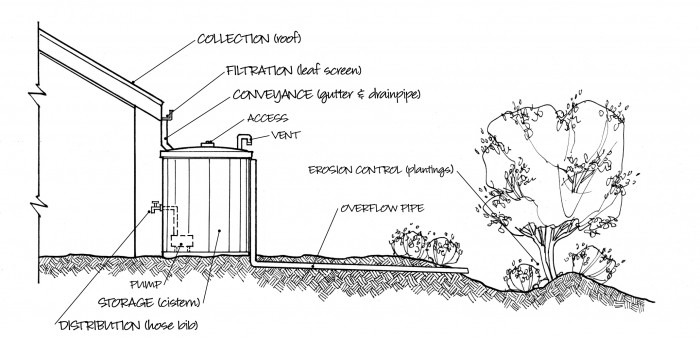
Although it is accurate to say that a cistern is a water storage tank, the term cistern, as used in this manual, is much more than a container. In roof-reliant landscaping, a cistern denotes a functioning water-storage system, not simply the shape and the material that make up the water tank’s walls. A cistern system includes the storage tank and its relationship and connection to each of its constituent parts.
09/23/2015 | (0) Comments
Stop Powdery Mildew
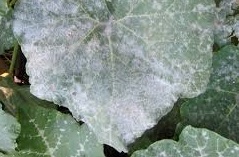
Gardener Veronica Fowler offers a new twist on an old recipe that uses baking soda and oil to fight powdery mildew. Veronica’s version uses Murphy’s Oil Soap in along with the baking soda to form a spray solution.
Ingredients:
1 gallon warm water
3 tablespoons baking soda
1 tablespoon Murphy’s Oil Soap
Directions:
Thoroughly mix the ingredients and treat mildew spots when they first appear. Treat every 7-10 days until drier weather stops new spots from forming. The solution can also be used preventively on plants that have a history of mildew by spraying one or two times in early spring before the disease appear.
09/21/2015 | (0) Comments
Roof-Reliant Landscaping™ Step 7: Know the Basics
Every roof-reliant landscaper needs to have an understanding of how to collect water from a roof and how to divert this water to landscape plants or to a cistern for storage. This post provides an introduction to rooftop rainwater harvesting and gives an overview of both types of cistern systems—aboveground (the water tank sits at ground level) and below-ground (the water tank is buried underground). The terms and cistern system components introduced in this post will further described in detail in the future.
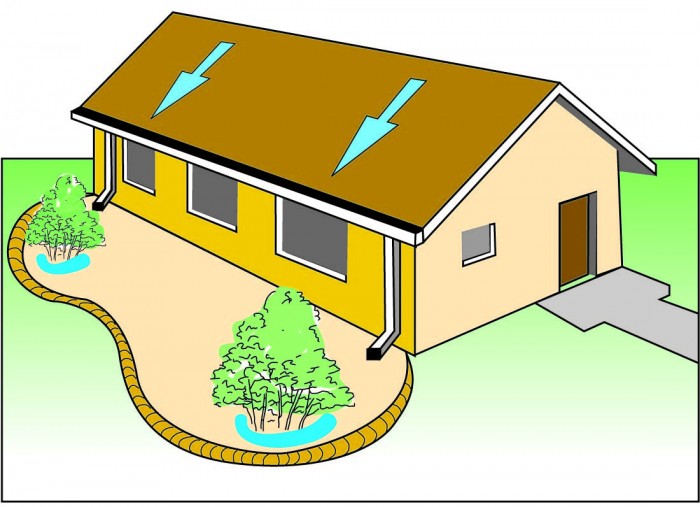
Rainwater harvesting systems are usually divided into two main types: simple (also commonly known as “passive”) and complex (also known as “active”). In a simple rooftop rainwater harvesting system, precipitation is captured from a roof and diverted directly to plants in the landscape. (The figure above shows an example of this simple approach.) Note that in this simple system, rainwater hits the surface of a roof and is gravity-fed downward. The water collected off the roof is diverted by gutters and downspouts, which then deliver the water to the area of landscape plants. Except for some land contouring to direct the flow of water on the ground and encourage the water to settle near the planted vegetation, no attempt is made to store the rainwater for future use.
09/17/2015 | (1) Comments
Roof-Reliant Landscaping™ Step 6: Control Erosion
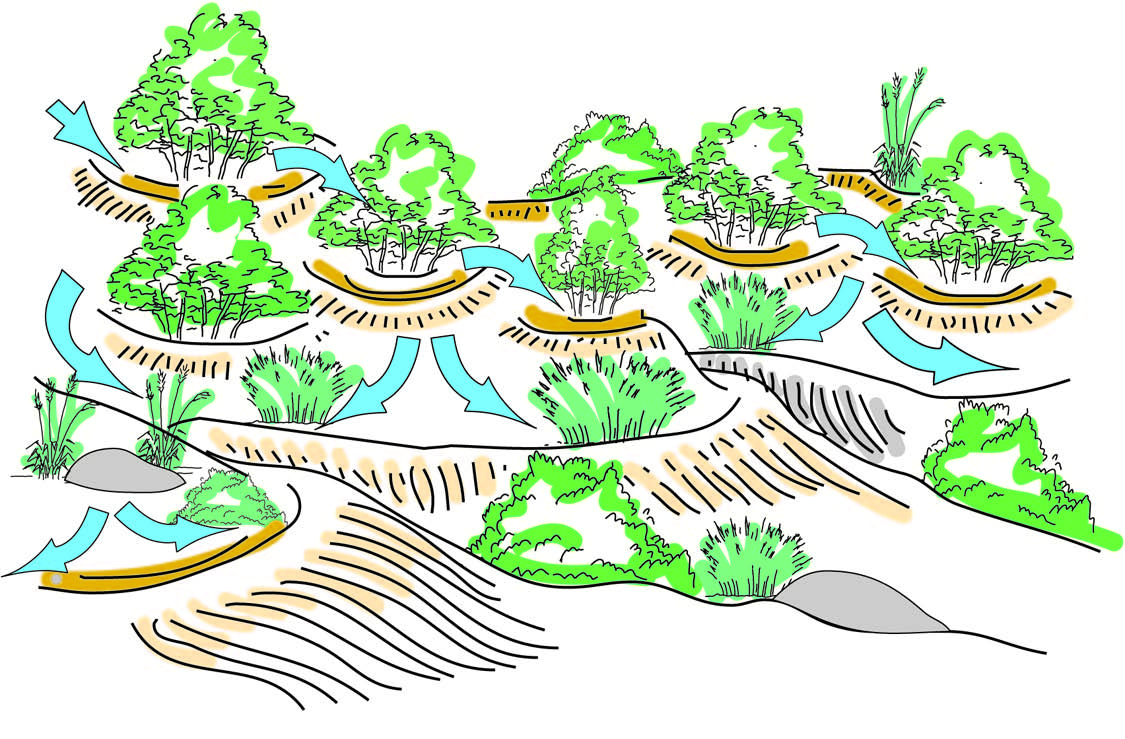
If you go through the steps of creating a roofreliant landscape using the seven basic xeriscaping principles highlighted above, it is important to take the necessary precautions to prevent your precious soil from eroding away during heavy storm events. Grade your garden in such a way that moisture can percolate into the soil, preventing the soil from migrating downhill.
09/14/2015 | (0) Comments
Roof-Reliant Landscaping™ Step 5: Mulch Appropriately

After building healthy soil by adding compost and planting water-thrifty plants in the appropriate locations, you will want to further conserve water and promote plant health by spreading a thick layer of mulch over your improved soil. Mulch does five critical things for soil: it shades, insulates, prevents erosion, adds nutrients (especially if fibrous mulch such as shredded bark is used) and obstructs weed growth.
09/11/2015 | (0) Comments
A Mine is a Terrible Thing to Waste
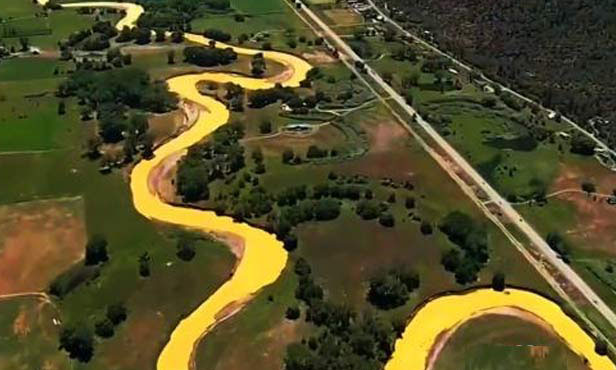
As a cumin-colored plume of toxic sludge trudges toward Lake Powell, a never-ending cleanup process begins in the northwest corner of New Mexico. In addition to worrying about their drinking water, people along the Animas River are concerned for thirsty herds, parched crops, and regional wildlife. They know that fewer jobs, lost revenues from tourism, and plunging property values are likely to follow.
09/11/2015 | (0) Comments
